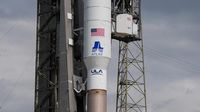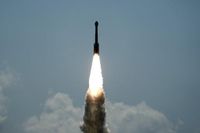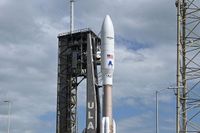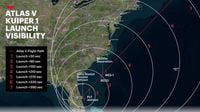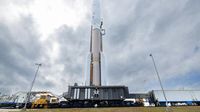On April 9, 2025, the United Launch Alliance (ULA) successfully launched Amazon's Project Kuiper, marking a significant milestone in the company's efforts to provide global internet access. The mission, which took place at Cape Canaveral Space Force Station, aimed to deploy 27 satellites into low Earth orbit as part of a broader plan to create a constellation of over 3,200 satellites.
The launch was initially scheduled for 7:00 p.m. EDT but faced delays due to unfavorable weather conditions, including cumulus clouds and elevated winds that violated safety limits. Eventually, ULA targeted a new liftoff time of 8:59 p.m. EDT. According to the U.S. Space Force’s 45th Weather Squadron, the launch window would close at 9:00 p.m. with only a 40% chance of favorable weather conditions.
Rajeev Badyal, vice president of Project Kuiper, expressed excitement about the mission, stating, "We’ve designed some of the most advanced communications satellites ever built, and every launch is an opportunity to add more capacity and coverage to our network. No matter how the mission unfolds, this is just the start of our journey, and we have all the pieces in place to learn and adapt as we prepare to launch again and again over the coming years." This sentiment underscores the ambitious nature of Project Kuiper, which aims to rival SpaceX's Starlink service in the competitive satellite internet market.
The Atlas V rocket, equipped with five GEM-63 solid rocket boosters, was set to fly on a northeast trajectory to position the satellites at an initial altitude of 450 kilometers. The satellites themselves are designed to deliver low-latency broadband services to users worldwide, using advanced optical inter-satellite laser communications links.
As the launch day approached, predictions for weather conditions fluctuated. Initially, there was only a 20% chance of acceptable conditions, but forecasts for a potential backup launch window on April 10 indicated a much-improved 90% chance of favorable weather. This backup plan highlighted ULA's preparedness to adapt to changing circumstances.
Despite the delays, the launch marked a historic moment for ULA, being the 275th flight of the Centaur upper stage and the heaviest payload ever launched by an Atlas V rocket. The mission was significant not only for Amazon but also for the broader goal of expanding internet access to unserved and underserved communities globally.
In preparation for the launch, ULA crews had completed extensive fueling operations, including filling the first-stage liquid-oxygen tank and preparing the Centaur upper stage for its role in delivering the satellites to orbit. The anticipation built as updates rolled in, detailing the countdown and weather conditions.
As the countdown continued, local officials, including Brevard County Emergency Management, activated their launch operations support team, reflecting the high level of coordination required for such missions. The excitement was palpable, with many on the East Coast hoping to catch a glimpse of the launch from their backyards.
ULA's mission website provided live updates and a livestream of the launch, allowing enthusiasts and the general public to follow the event closely. The livestream began approximately 20 minutes before liftoff, offering viewers a front-row seat to this groundbreaking event.
In the context of national security, ULA has been assigned two national security launches for the 2025 fiscal year, illustrating the strategic importance of these missions. The financial commitment to ULA was substantial, with the total price for these missions reaching $427.6 million. In comparison, SpaceX secured seven missions worth $845.8 million, showcasing the competitive landscape of the space launch industry.
As Amazon's Project Kuiper embarks on its mission, it faces strict deadlines imposed by the Federal Communications Commission (FCC). The FCC granted the Kuiper constellation a license in 2020, requiring that half of the satellites be operational by July 30, 2026, and the remaining satellites by July 30, 2029. Failure to meet these deadlines could result in restrictions on the constellation's operations.
The first batch of satellites, which includes upgrades from earlier prototypes launched in 2023, is designed to enhance the capabilities of the network significantly. Each satellite is equipped to operate in a way that minimizes light reflection, thereby reducing its visibility in the night sky.
As the launch concluded, the focus now shifts to the operational phase of the satellites. Amazon plans to initiate service once 578 satellites are in their operational orbits, with the full constellation deployment to occur in five phases. This ambitious project aims to revolutionize internet access worldwide, particularly in areas where connectivity has been limited or non-existent.
In summary, the successful launch of Amazon's Project Kuiper represents a significant step forward in the quest for global internet connectivity. With the backing of ULA and a robust plan for satellite deployment, the future of satellite internet looks promising, potentially transforming how millions access information and services.
